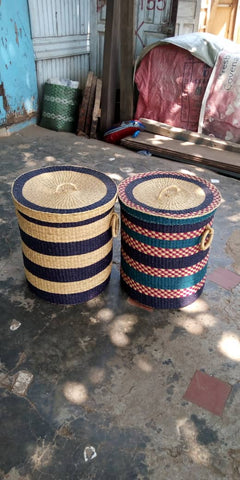Modern Afro-inspired style has dramatically increased its visibility, especially in the luxury interior design industry. African-inspired home decor accessories are becoming progressively more in demand. The African decor trend embraces nature's raw materials, which reflect Africa's harsh climate. In contrast, textiles with motifs of plants and animals reflect the country's natural beauty. African style decor is characterized by many different colors and textures in fabrics, carvings, and artworks, which makes it easy to integrate them into any interior style.

It is important to remember that modern African-inspired style is not about overcrowding one's house or apartment with masks, baskets, and red and brown shades of color. It is about finding just a few features that add a touch of an African mood to one's basic decor. It is about finding elements that create harmony, personality, and warmth. There are countless ways to incorporate timeless African elements into the home. Here are some African home decor ideas:

10 African Home decor ideas to bring Africa's ambiance into your home
- Natural Plants- indoor plants and greenery;
- African mud cloth table cloths and wall-hangings, handmade in Ghana using an all-natural dying process;
- Vintage fabric that is handwoven from raffia-palm leaf fibers for wall hangings and cushions;
- Natural materials and accessories, primarily wooden and woven ones;
- Patterns, materials, and fabrics all have a natural and raw feel, which makes them highly tactile;
- Handwoven baskets and bowls are often placed on walls in groups or shown visually in illustrations and images;
- Untreated surfaces are iconic in African design;
- Handmade designs with a focus on raw surfaces, soft shapes, and solid natural materials;
- Colors inspired by African nature and culture: reddish and brown earthy shades of clay and terracotta in combination with bright and simple elements and
- Rattan, cane, bamboo, and wood furniture.

At the forefront of the global interest in the Afrocentric decor movement are designers like Ethiopia's Hana Getachew and Nigeria's Eva Sonaike. They infuse the "African" aesthetic into their lines of high-end decor accessories and handwoven fabrics.
Hana Getachew, born in Ethiopia and emigrated at three, told Martha Stewart that she created Bolé Road Textiles after visiting Ethiopia as an adult. Getachew credits the trip back to Ethiopia as a true turning point in her life; it connected her to her roots. As Getachew started her journey within the interior design world, her background eventually became the heart of her shop, which is filled with handwoven textiles that speak to her heritage.

Eva Sonaike is a London-based Interiors company specializing in luxury home textiles and soft furnishings with a distinctive and vibrant West-African aesthetic. The company's ethos 'Bringing Color to Life,' is reflected in its signature collections of cushions, rugs, fabrics, and furnishings using textiles designed by Eva Sonaike. Emphasis is placed on hand finishing, distinct designs, and high-quality manufacturing. Eva Sonaike's passion for African fabrics and interior design prompted her to start her business in 2009; her mission was to bring the vibrancy of African colors and aesthetics to the luxury home-décor and accessories market. Eva Sonaike told House Beautiful that "Bringing the African aesthetic to the forefront of the interiors industry, while sharing the mood-boosting benefits of color, is my ultimate goal." With textiles expertly printed and products manufactured in the UK, Eva Sonaike stays true to her concept of 'Bringing Colour to Life,' celebrating a luxury African way of life that perfectly complements modern contemporary living.

Design is a form of storytelling. It is a medium through which those stories are told. In 2009, Chimamanda Ngozi Adichie, a writer, spoke on "The Danger of a Single Story," which has become one of the top ten most-viewed TED Talks. Adichie who is Nigerian explains how she has met many people who only had a single story about Africa. Some people thought that Africa was a country, or that Africa is supposedly filled with poor people and starving children. These assumptions are incorrect in nature. Adiche elaborates on how a single story and stereotype about a different culture or situation can really narrow a person’s thinking and alter their perceptions. There are over 50 countries on the African continent.

African design is rooted in a rich heritage and traditional techniques. Contemporary African designers acknowledge that African traditional craft and craftsmanship is from where they draw inspiration: preserving the past by putting a focus on their heritage and traditions while remaining open to global influences. Across Africa, sustainable design focusing on social responsibility and the environment is essential. Using locally sourced natural materials has always been part of the African design process.
